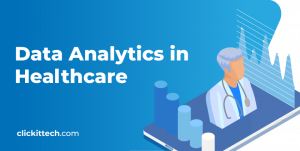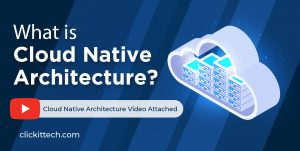By the end of 2024, 99% of companies will be using at least one SaaS solution. Therefore, to ensure it meets the real needs of your niche, you must build a SaaS MVP first.
We will dive into all the latest techniques for building a successful minimum-viable product and the process you need to follow.
What is a SaaS MVP?
It’s the most basic iteration of your software that lets you test your project concept and get valuable user feedback. The trick is to give those early birds precisely what they need to get on board while backing your business strategy. As a result, you can avoid wasting time and money developing features that might not appeal to your target market.
Why is it Important to Build a Successful SaaS MVP?
- The first reason is development flexibility. By starting with a lean MVP, you have the flexibility to iterate and adapt based on user feedback and market demands.
- Next, building a minimal version of your product allows you to minimize upfront costs. This means you can test your idea with minimal financial risk.
- You must also consider scalability and accessibility. By focusing on core features and functionality, you can make sure that your product is scalable and accessible to a wider audience as you grow.
- You need to capitalize on the market opportunities and gain an edge over your competitors by prioritizing essential features and getting your product to market quickly.
- Last but certainly not least, steady income. By launching a SaaS MVP, you can begin making money right away, even if it’s only a small portion of your final objective. Not everyone can become a millionaire overnight, right? This first revenue stream helps you determine the monetization potential of your product and keeps your business afloat as you expand and enhance what you’re delivering.
How To Build A Successful SaaS MVP
Now you know all the benefits you can gain by developing a SaaS MVP, whether you’re a startup or an established business, and understanding how to efficiently build an MVP can save you time, reduce costs, and increase your chances of success. Let’s dive into the process and explore the steps for turning your SaaS vision into reality.
Understanding Your Target Audience
First, you have to know your audience. You must pinpoint your target market and get what makes your potential users tick. That means digging deep with some serious market research to find out their needs and what gets under their skin. You must think about who your ideal customers are. What industries do they belong to? What floats their boat? Think demographics, interests, and habits. The answers to these questions will help you to figure out your target market.
Once you’ve identified your target market, you have to find out their needs, desires, and pain points. What challenges are they facing in their daily workflows? How may your SaaS solution improve their lives and ease these pain points?
SaaS Pricing Models
Let’s discuss the different SaaS pricing techniques and business structures. Selecting the appropriate price plan and business model is essential for the success of your SaaS MVP. Here are some popular options:
Per-user pricing: You can charge users based on the number of users or seats accessing your platform.
Tiered pricing: You can offer different packages with varying levels of features and pricing.
Pay as you go: Here, customers pay only for the resources or features they use. This is highly cost-effective for them.
Usage-based pricing: It is very similar to pay-as-you-go but charges users based on their usage metrics, such as data storage or API calls.
Freemium: Here, you can provide a free version of your product, as many other apps do, and then give users the option to upgrade to a premium version for extra features and capabilities.
Subscription-based pricing: You can charge users a regular subscription fee for accessing to your SaaS platform, ensuring a consistent and reliable income stream.
If you want to learn how to choose the right SaaS business model and pricing strategy, be sure to check out our blog on the “Top 6 SaaS business models that will transform your company.”
Designing the UI and UX
With a clear understanding of our intended users and a chosen business model, we must now direct our attention towards the creation of the user interface and how to improve user experience for our SaaS MVP. This involves the development of a prototype, which enables us to visually explore and evaluate various interface designs and user pathways before proceeding with actual development. Through prototyping, we can efficiently update our ideas, gather valuable input, and improve our design concepts.
Getting feedback is highly important when you’re creating a user-friendly interface. Whether it’s from potential users, stakeholders, or usability tests, taking in feedback helps us pinpoint areas to amp up and make smart design moves. By tweaking our prototypes based on feedback, we can nail down a final product that resonates with our target audience.
In every great SaaS MVP, you’ve got to have a killer user-friendly interface stealing the spotlight. It’s all about serving up snappy navigation options, making those call-to-action buttons pop, and creating layouts that are easy on the eyes. Keeping it straightforward and slick is key to keeping users locked in and digging deeper into what you’re bringing to the table.
Now, let’s move into the next development phase and bring our vision to reality!
Developing the MVP: Technology Stack
With our UI/UX design in place, it’s time to start the development phase of our SaaS MVP.
First, we will need to choose the right technology stack. Selecting the right technology stack involves carefully evaluating various programming languages, frontend and backend technologies, database management systems, cloud platforms, and DevOps tools to ensure they align with our project requirements and long-term goals.
Programming languages: You have multiple options. JavaScript’s all about flexibility, Python keeps it simple, Java scales like a champ, and Ruby’s got that developer-friendly vibe.
Framework or library: When it comes to whipping up the user interface for our SaaS MVP, we have to pick a framework that lets you build frontends that really pop. React has that component setup, Angular is packed with features and tools, and Vue.js is easy to use.
For the backend: We need something reliable to handle all that server-side action. Node.js is all about speed with its non-blocking setup, while Django gives us a high-level framework for fast development.
Database management: Don’t forget about picking the right system to keep things running smoothly. You can choose PostgreSQL for its reliable features, MongoDB for its flexibility and scalability, or MySQL for its speed and ease of use.
Cloud Platforms: Provide the infrastructure and services needed to deploy, scale, and manage our SaaS MVP easily. When selecting the most suitable cloud platform for your MVP, you must prioritize scalability, cost-effectiveness, reliability, security, ease of use, performance, support, geographic reach, and minimizing vendor lock-in.
Therefore, you can pick either AWS, with its reliable global infrastructure and advanced services like AWS Lambda, Google Cloud Platform with its data analytics and machine learning capabilities, or Microsoft Azure, known for its integration with Microsoft’s software and strong support for enterprise environments depending on your budget, performance, and scalability needs.
DevOps tools: Will simplify the deployment processes. Whether we use Jenkins with its robust automation and continuous integration capabilities, Kubernetes, known for its container orchestration and management, or Docker, which offers portable containerization technology, adding these technologies into our process guarantees better collaboration, quicker development cycles, and higher quality releases. Check out our blog to learn more about DevOps tools.
Are you ready to build the ultimate SaaS technology stack? Read our blog “The Perfect SaaS Tech Stack Every CEO, CTO, and VP Should Know.”
Build the Right Team to Create Your SaaS MVP
The success of a SaaS MVP relies heavily on assembling the right team. Here’s an example of how you can structure your team with the Agile Methodology and Scrum approach:
1. One Product Owner: Responsible for defining product requirements and setting team goals per sprint.
2. One Scrum Master: Supports the Product Owner by understanding the product and resolving blockers for the development team.
3. The Development Team with 3 members
- Cloud Engineer (Part-time)
- Designs infrastructure for cloud hosting, ensuring it meets application needs.
- Frontend Developer
- Creates visual elements and integrates backend resources for a seamless user experience.
- Backend Developer
- Develops endpoints and database schemas to enable expected application functionality.
Also, you should consider hiring a UI/UX designer for additional design support to ensure clarity in design requirements, aiding both the frontend team and the Product Owner in visualizing the final product’s alignment with user needs.
At ClickIT, we select “A” players among our in-house team based in the north of Mexico and our engineers across LATAM for your MVP team. Contact us today to start your project!
Launching and Testing
Now let’s say, after investing months of effort and commitment, the time has come for you to unveil your SaaS MVP to the market. However, prior to its launch, there are certain measures you must undertake to guarantee a smooth introduction.
Before we can release our SaaS MVP, it is important to establish analytics and tracking systems. These tools enable us to observe user actions, measure important metrics like user involvement and loyalty, and gain valuable knowledge about user interaction with our product. Using platforms like Google Analytics, Mixpanel, or Amplitude, we can collect practical data that guides our decision-making and improves the performance of our MVP.
Once our SaaS MVP goes online, it’s time to start getting feedback from our early users. We can use different platforms, such as social networking, in-app messaging, feedback forms, and user surveys, for this. By actively seeking out their feedback, we may learn about our users’ requirements, preferences, and pain points and pinpoint areas for development.
Measuring Success
Just launching the MVP is insufficient. We must measure its success and monitor KPIs to ensure we progress towards our business objectives. By establishing KPIs, examining user engagement metrics, and monitoring conversion rates, we can raise the efficiency levels of our MVP. Furthermore, this aids in making the right decisions based on data to stimulate growth and expandability.
Initially, we must establish the KPIs that will enable us to gauge the success of our SaaS MVP. By creating explicit KPIs, we can establish standards for success and monitor our advancement over time.
User engagement is super important for our MVP’s success and prospects. We’ve got to check out metrics such as how many users are active, how long they stick around, and what features they’re like. This helps us see how users are using our product and where we can level up.
The key to the success of our SaaS MVP lies in its capacity to transform users into customers who pay. By monitoring the rates of conversion at every step of the customer’s journey, starting from registration and concluding with purchase, we can pinpoint areas of resistance and refine our sales process to achieve optimal efficiency.
SaaS MVP Key Takeaways
We’ve covered a lot of ground in this video on How to Build a Successful SaaS MVP. As we wrap up, let’s recap the key takeaways:
- Recognizing the needs and concerns of your intended audience is necessary to identify user requirements and challenges.
- Selecting the appropriate technology and tech partner to establish the groundwork for a flexible minimum viable product.
- Introducing and evaluating your SaaS MVP enables you to collect input and make improvements based on user interactions.
- Assessing achievement through key performance indicators, user involvement measurements, and conversion rates facilitates progress and sustainability.
So, are you ready to build your SAAS MVP? If so, contact us and seize the market share your idea deserves with our ideal SaaS Application Development Services.









